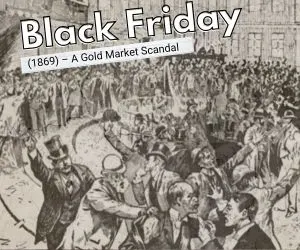Advertisement – Continue reading below
Market crashes have not just been an occurrence of the 20th century; they’ve been a general occurrence throughout history. While some stocks rise, some may drop, affecting people all over the world. Wanna know the biggest market crashes? Let us find out the greatest crashes ever!
1. Black Friday (1869): A Gold Market Scandal

Back in 1869, two businessmen, Jay Gould and James Fisk, tried to take control of the gold market on the New York Gold Exchange. At the time, the U.S. economy was already struggling due to the Civil War. To stabilize things, President Ulysses S. Grant had introduced a policy to sell Treasury gold at regular intervals. However, when Gould and Fisk’s scheme was exposed on September 24, 1869, gold prices crashed, triggering a stock market meltdown. The country faced economic turmoil for months afterward.
